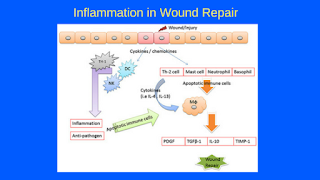
Vitamins for Tissue Repair Cells make up every part of our body, and they require many nutrients to grow and repair properly. Directly or indirectly all vitamins play a role as a type of nutrient in tissue repair and growth. Some nutrients contribute directly to developing healthy muscles, skin, hair and bones, as well as general repair during injuries. Vitamin A Vitamin A is frequently two types observed in the diet. One is derived from animal merchandise and is regarded as preformed diet A, and the second one from plants, recognized as beta carotene. Vitamin A helps generate and maintain healthy body tissue, teeth, bones along with skin, mucous membranes and soft tissue. Vitamin A has various integral functions, such as assisting in the health of cells. Vitamin A helps ensure that all of body cells can develop and reproduce normally, a process recognized as cellular differentiation , and it contributes to healing and repairs as well. Vitamin A also helps in boost he

